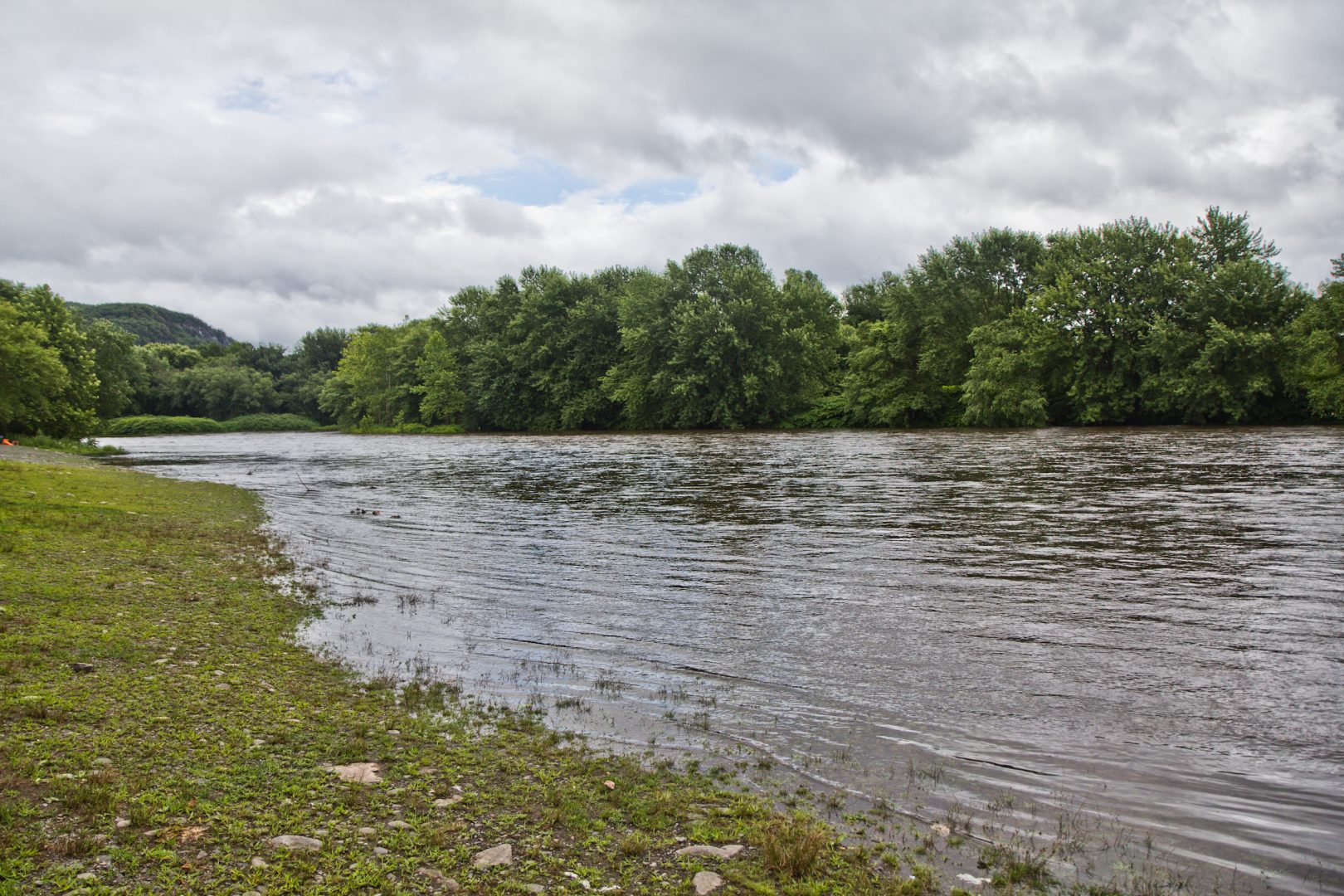
A view of the Delaware River in Monroe County.
Kimberly Paynter / WHYY


A view of the Delaware River in Monroe County.
Kimberly Paynter / WHYY

Kimberly Paynter / WHYY
A view of the Delaware River in Monroe County.
The Trump administration announced it’s finalizing a rollback of a major Obama Era rule that clarified which waterways can be regulated by the Clean Water Act.
The new rules were cheered by farming, oil and gas, and construction industries, but panned by environmentalists and even the EPA’s own science advisory board.
At a press conference in Pittsburgh Thursday, administration officials said the new rule will bring clarity to a longstanding question: which streams and wetlands the federal government can regulate under the Clean Water Act.
Cosmo Servidio, EPA’s Region 3 mid-atlantic administrator, said the old rules, written under the Obama administration, led to confusion.
“It quite frankly made landowners and particularly farmers, not understand what they could do on their properties,” said Servidio.
The new rule, called the Navigable Waters Protection Rule, replaces the Obama administration’s 2015 Waters of the United States Rule, or WOTUS.
Servidio said the new rule will make it “easier to understand where the Clean Water Act, applies” and where it doesn’t.
“It would also help business owners spend less money and time making decisions about whether their (properties’) waters are (regulated) waters of the United States and more time running their businesses and strengthening the nation’s economy,” Servidio said.
In 2015 the Obama era rule attempted to clarify longstanding confusion over whether certain water bodies were covered under the Clean Water Act by defining streams and wetlands that could be regulated under the federal rule. The definition included less-than-permanent waterways: dry arroyos in the Southwest, irrigation canals, and ephemeral streams, which flow after heavy rains or during spring snow melt. The Trump administration’s re-write cuts wetlands not directly connected to rivers and ephemeral streams out of the new rule.
It defines waters subject to the Clean Water Act to be oceans, navigable rivers and their tributaries, lakes, ponds, and impoundments “that contribute surface water flow in a typical year” to rivers and oceans, and “wetlands adjacent to other” rivers and streams.
The rule would exempt 18 percent of the nation’s streams, and 51 percent of its wetlands from oversight under the federal rule, according to an internal EPA slideshow obtained by E&E News in 2017.
That means companies or landowners will now be able, for instance, to alter the course of ephemeral streams without first getting a federal permit, said Scott Hans, regulatory branch chief at the U.S. Army Corps of Engineers’ Pittsburgh district.
“If it’s only an ephemeral stream and only flows in response to stormwater events, you probably won’t need a permit to do that,” Hans said.
The EPA’s own scientific advisory panel said in draft comments that the new rule lowers protections for the nation’s waterways, and offers “no scientific justification for abandoning the more expansive view of connectivity of waters accepted by current hydrological science.”
The authors of the comments said that pollution in waterways deleted from the protected list can ultimately end up in rivers and streams that are covered by the Clean Water Act, which was enacted in 1972 to protect against water pollution.
Asked whether the rule was justified, even though the EPA’s own scientific advisers disagreed with it, Servidio said the agency had undergone “a thorough process” to arrive at its final decision. “Administrator (Andrew) Wheeler from day one made sure that we worked with with our staff to define what we needed for clarity and predictability,” Servidio said. “We had 620,000 comments from the public, which we addressed and incorporated into this final rule-making package.”
The rule was applauded by farming, developer and oil and gas groups.
“Clear, easily implemented and legally sound permitting regulations help regulators, landowners and property developers from all industries make sound resource allocation decisions that protect the environment while facilitating economic growth,” said Frank Macchiarola of the American Petroleum Institute, in a statement.
Environmental groups roundly criticized the new regulation.
In a statement, Clean Water Action President and CEO Bob Wendelgass said the rule would strip “protections from streams and wetlands to pad the profits of fossil fuel companies, developers, and other corporate polluters.”
States and environmental groups could sue to block the rule once it takes effect in April.
StateImpact Pennsylvania is a collaboration among WITF, WHYY, and the Allegheny Front. Reporters Reid Frazier, Rachel McDevitt and Susan Phillips cover the commonwealth’s energy economy. Read their reports on this site, and hear them on public radio stations across Pennsylvania.
(listed by story count)
StateImpact Pennsylvania is a collaboration among WITF, WHYY, and the Allegheny Front. Reporters Reid Frazier, Rachel McDevitt and Susan Phillips cover the commonwealth’s energy economy. Read their reports on this site, and hear them on public radio stations across Pennsylvania.
Climate Solutions, a collaboration of news organizations, educational institutions and a theater company, uses engagement, education and storytelling to help central Pennsylvanians toward climate change literacy, resilience and adaptation. Our work will amplify how people are finding solutions to the challenges presented by a warming world.